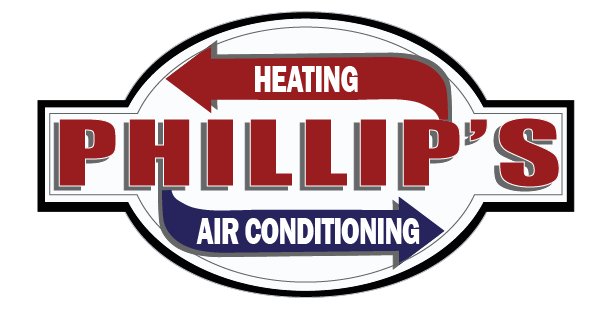Here in Ohio, bitter cold is the norm during the winter. In the worst-case scenarios, we’re used to plunging temperatures and even intense blizzards, with our coldest recorded wind chill reaching over 70 degrees below zero back in the 80s.
Of course, it’s easier to endure anything winter can throw at you with a working heater. Without one, you might find it harder to grin and bear it!
When your home heating is not working during the winter, your first instinct may be to curse and panic. However, there are a few common issues worth troubleshooting before you call a pro. Here are a few reasons your heater might malfunction.
Your Thermostat Settings Are Incorrect
Before you assume you have a broken heater, check your thermostat. It may sound like a no-brainer, but it’s easy to leave your thermostat on the wrong setting, making it impossible for your HVAC system to heat your home.
Make sure you’ve switched your settings to “heat” instead of “cool,” and confirm that you’ve adjusted it to your desired temperature. If you’ve scheduled your heating cycles, make sure your thermostat is displaying the right time, as it may not turn on as needed otherwise.
If you have a thermostat whose battery you can easily replace, do so. You can also try a manual reset.
Double-Check the Power
Some furnaces have switches that are easy to turn off by accident. Look for a wall switch near your unit or on the device itself that you may have pushed by mistake. This is especially common if you’ve recently stowed boxes in the attic or you’ve had a cable or internet technician doing work in the area.
Again, this might sound like a no-brainer, but you’d be surprised how often our HVAC technicians find that the only thing “wrong” with a heater is that it has no power!
While you’re checking the on/off switch, take a look at your breaker box as well. If any of the breakers have tripped, your unit might not be getting the power it needs. This can sometimes be a sign of underlying electrical problems, so it’s wise to call an electrician if the breaker trips every time you use your heater.
Your Air Filter Is Dirty or Clogged
If it sounds like your heater is turning on but your home is still cold, your air filter may be to blame.
A dirty filter may seem like a minor nuisance, but it can wreak havoc on your entire system. When your filter is covered in dust and debris, your heater has to work much harder to circulate air through your home. This can even cause your heat exchanger to overheat and shut off.
Replace your old filter with a quality product and see if it helps.
You’ve Switched the Gas Off By Accident
If you have a gas filter, is it possible that you’ve turned its gas valve off by mistake?
Locate your furnace’s gas line and follow it back to the meter. The handle should be parallel to the gas pipe, not perpendicular.
If you have an older unit, it may also have a pilot light. You can check to be sure it’s lit by removing the front panel and burner cover.
Dirt and Debris Are Clogging Your Vents
Depending on where your forced air furnace vents are, you might be dealing with excess dirt or debris. When the vents get blocked, it can be difficult or impossible for your furnace to perform its usual air intake and exhaust. This can even cause the motor of your unit to overheat, forcing a system shutdown.
Turn off your unit and head outside to the system’s vents to clear away leaves, twigs, grass, or dirt. If the only covering for these vents is a thin screen mesh, consider replacing it with a heavy-duty hardware mesh instead.
Once you’re done, give the system about a half-hour to cool down. Turn the heater on again to see if it starts to heat your home.
If ice is covering these vents, remove it as best you can and call for heating services, as this can be a sign of larger problems.
The Drain Lines Are Clogged
Most furnaces generate a fair amount of condensation when heating your home. With heavy use, they may create several gallons of water a day!
To get rid of this excess moisture, your furnace uses its drain lines. If anything clogs these lines, water may begin to back up inside your home. To prevent this, most furnaces automatically shut down after sensing too much moisture.
You can flush your drain lines of sediment or mold in the same way you’d fix any AC drain line. A cup of vinegar is often all you need, though a dry/wet vac may help you get rid of mold or mildew.
Your Warm Air Can’t Circulate
In some cases, you know your furnace is working because you don’t have a completely cold house. If one or two rooms are warm, the problem may lie with how that warm air circulates.
Make sure all of the vents and registers are open in the colder areas of your home. If you have access to any of your furnace’s ductwork, check it for gaps or damage.
You can repair minor issues on your own using a few supplies you’ll find at any hardware store, including foil tape or metal duct tape. You can also call an HVAC expert for longer-lasting repairs.
Call Us When Your Home Heating Is Not Working
Though there’s plenty you can do on your own when your home heating is not working, calling for expert help may be your best bet. A professional HVAC technician can do more detailed troubleshooting than you can on your own, and they’ll also be able to perform any motor maintenance or repairs your unit needs.
That’s where Phillips Heating and Air Conditioning comes in. As the trusted HVAC provider throughout Newton Falls, Warren, and Austintown, we’re proud to give our clients peace of mind and a warmer, more comfortable home when they need it most. We even offer 24/7 emergency service!
To beat winter’s chill and get your heater back up and running, call (330) 878-3072 or contact us online today.

